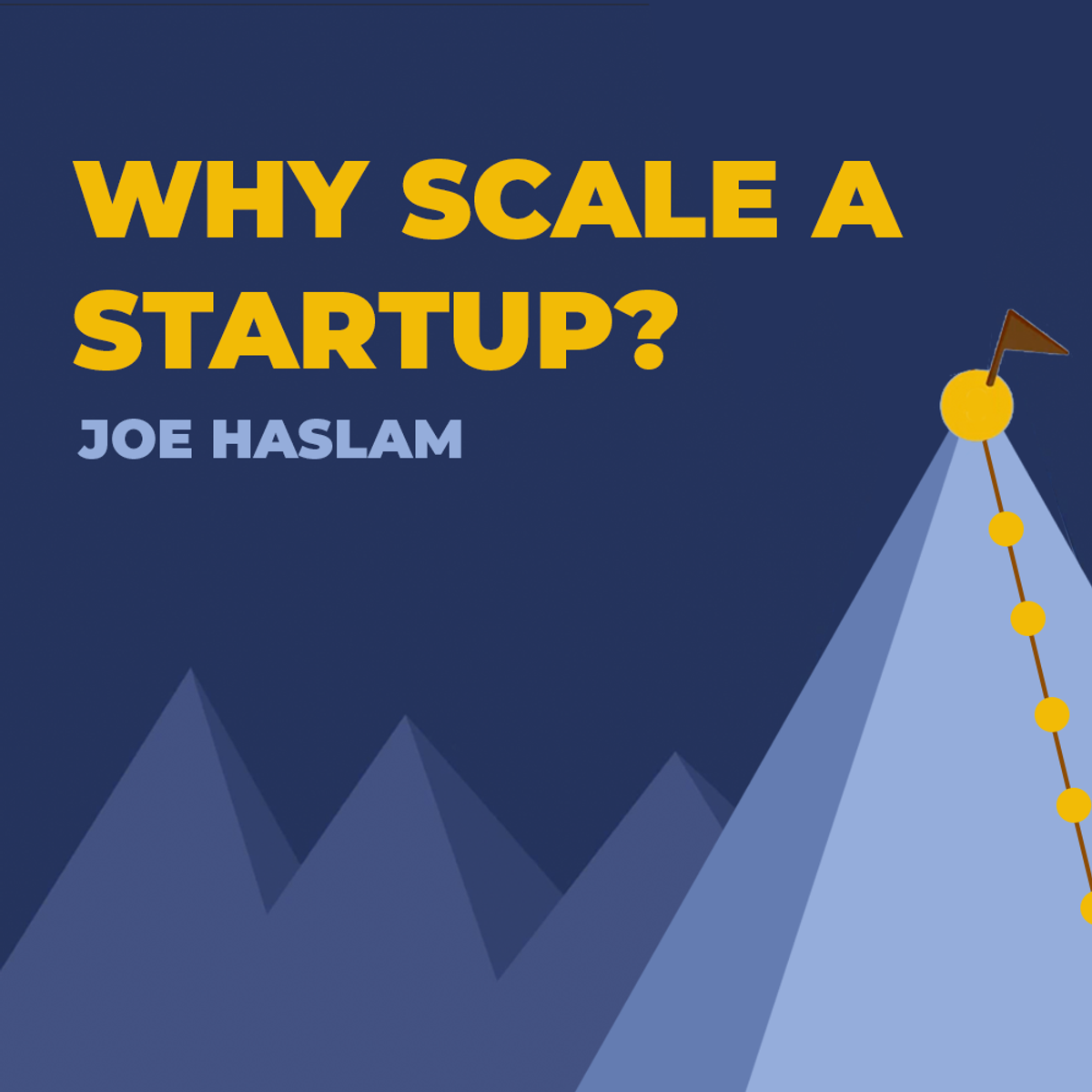Back to Courses









Business Courses - Page 40
Showing results 391-400 of 2058

Cultural intelligence: Become a global citizen
We now live in a truly global, interconnected world in which every manager requires a high level of cultural intelligence. In a diverse work environment, a successful leader must understand the cultural backgrounds, beliefs and attitudes of the people around them – or run the risk of failing to achieve the organisation’s goals. This course, via structured learning activities (video lectures, quizzes, discussion prompts, industry interviews and written assessments), will teach you that those with high ‘cultural intelligence’ – are good at spotting cultural differences and adapt their behaviour accordingly. You’ll develop cultural intelligence and sensitivity – key future-focused capabilities required of every leader.

Why Scale a Startup?
If you want to find out how to begin to scale up a company, this course is for you! This course will guide you through all the key questions you need to ask yourself to prepare to scale up a startup, provide you with the necessary frameworks to begin the scaleup process, and offer insights from real, successful companies who have been in your shoes before and have made the transition.
After taking this course, you will be able to: identify the key challenges to scaling up and list possible solutions to these problems; discuss the differences between growing and scaling; offer tips on how to make your company weatherproof (identify risk and offer strategies to mitigate these risks); and explain common best practices for scaling up effectively and efficiently. This course brings together practical advice, real-life examples, and big-picture insights from well-known companies and experts in the field so you can see what has worked for other companies and develop a "toolbox" of scaling solutions.
Make your scaleup journey as smooth and surprise-free as possible - with this course, you´ll know the types of issues that arise in most scaleups and learn how to solve them.

Blockchain and Cryptocurrency Explained
The sudden rise in the value of Bitcoin and other cryptocurrencies, and its subsequent decline, focused the world’s attention on cryptocurrencies as a means of payment. Blockchain technology powers Bitcoin and has been hyped as the next new, transformative technology.
In this course, we first discuss the technical underpinnings of blockchain and review key concepts such as decentralization and consensus algorithms.
We then examine blockchain as an asset and review the dynamics of the cryptocurrency markets.
Finally, we examine blockchain as a business solution, with a focus on understanding business cases in which blockchain does and does not make sense.

Create a Free Marketing Calendar with CoSchedule
In the business world today you need tools that can make your job easier and let’s be real, you need tools that work for you to complete your tasks faster. You will see that you can add all of your projects to your marketing calendar from various apps that your organization uses with CoSchedule.You will explore the work you can do with emails, events, and website content with iMessage, Slack, and Gmail within CoSchedule. In this project, you will see how you can use CoSchedule to create a marketing calendar that focuses on a social campaign to keep your projects organized and save you time.

Necessary Condition Analysis (NCA)
Welcome to Necessary Condition Analysis (NCA).
NCA analyzes data using necessity logic. A necessary condition implies that if the condition is not in place, there will be guaranteed failure of the outcome. The opposite however is not true; if the condition is in place, success of the outcome is not guaranteed.
Examples of necessary conditions are a student’s GMAT score for admission to a PhD program; a student will not be admitted to a PhD program when his GMAT score is too low. Intelligence for creativity, as creativity will not exist without intelligence, and management commitment for organizational change, as organizational change will not occur without management commitment.
NCA can be used with existing or new data sets and can give novel insights for theory and practice. You can apply NCA as a stand-alone approach, or as part of a multi-method approach complementing multiple linear regression (MLR), structural equation modelling (SEM) or Qualitative Comparative Analysis (QCA).
This course explains the basic elements of NCA and uses illustrative examples on how to perform NCA with R software. Topics include (i) Setting up an NCA study (ii) Run NCA and (iii) Present the results of NCA.
We hope you enjoy the course!

Introduction to the Nonprofit Sector, Nonprofit Organizations, Nonprofit Leadership and Governance
This course introduces you to the nonprofit sector, nonprofit organizations, and the concepts of leadership and governance. While this course has been developed with North American culture in mind, we do appreciate that in other parts of the world the nature of the nonprofit sector, nonprofit organizations, nonprofit leadership and governance may not be the same. Nevertheless, it is our hope that much of the course content will still be of value to those in other parts of the world.
To learn more about this course, please watch the overview video by copying and pasting the following link into your web browser: https://goo.gl/YMg1Qd.
Keywords: Nonprofit; Nonprofit Sector; Voluntary Sector; Nonprofit Organizations, Non-Governmental Organizations, Volunteer Organizations, Leadership, Management, Governance, Board, Board of Directors, Performance, Effectiveness
Course 1 Overview:
Week 1: Some of the questions you will explore this week are: What is the nonprofit sector and why does it exist? What are the unique characteristics of nonprofit organizations? What are the trends and emerging issues facing organizations in the nonprofit sector?
Week 2: Questions to be explored this week are: What is leadership at the governance level and how is it different from management? What is good governance and why does it matter? What is a board of directors?
Week 3: This week's questions: What roles do board members play in nonprofit organizations? Broadly speaking, what are boards responsible for and how do they go about their work? What are some of the issues that challenge the board's ability to go its work?
Week 4: At this stage, you are asked to review the course content, submit a written assignment (known lightheartedly as a BEAR (Board Effectiveness Readiness Assessment), and take two multiple choice Readiness Assurance Tests (known similarly as RATs). One RAT will assess knowledge and reading comprehension and the other will test application of knowledge within a practical case.
Week 5: We will encourage you to discuss the RATs in the discussion forums and take them again should you wish to change any of your answers based on the information exchanged.

Communication in the 21st Century Workplace
The workplace is more diverse than ever before. As the world population grows and our connectivity increases, it is common to work alongside colleagues from different generations, life experiences, cultures, genders, orientations, and religions. The increased diversity coupled with the shift toward remote and hybrid work environments means it's more critical than ever to develop appropriate communication strategies and practices. This course will teach you to identify and adapt your own communication style to not only increase team productivity, but also build bridges with colleagues from all backgrounds.
By the end of this course, you will be able to:
1.Identify your own communication style
2. Describe methods to increase effective communication
3. Discuss how changing demographics affect workplace communication
4. Differentiate between the five working generations and their communication preferences
5. Identify the communication benefits of different work environments, such as in-person, virtual, or hybrid
6. Discuss effective techniques for communicating with a diverse workforce
7. Implement a flexing communication strategy to better communicate with one’s workplace team

Financial Analysis of Scenarios and Decisions
This course focuses on adopting and implementing a financially analytic mindset when engaged in organizational decision-making and scenario analysis.
The course begins with an overview of the "internal" perspective of the organization, in which you will learn fundamental concepts, including the importance of how cost information is organized for different decision scenarios. You will then learn about scenario analysis, including cost-volume-profit analysis and other fundamental concepts that help facilitate financial organizational decision-making.
Next, you will learn about planning and budgeting, a key function that allows organizations to identify and allocate resources necessary to achieve organizational goals. You will then learn how to assess actual performance against these budgets using variance analysis.
Finally, you will learn about the organization’s performance measurement, evaluation, and compensation system. Specifically, you will learn about the advantages and disadvantages of common financial performance measures and understand how an organization uses non-financial performance measures within its strategic performance measurement system to complement the financial perspective.

Create a Project Charter with Google Docs
Have you been assigned to manage a project and don’t know how to start capturing all the pertinent information into a succinct and crisp format?
By the end of this project, you will create a master and living document, containing important information that you and stakeholders can refer back to as your project develops.
A Project Charter is a living document that displays core information of a project, such as the project's name, sponsors, problem and goal statements, scope, benefits, and timeline. It is used typically in Lean Six Sigma DMAIC (Define, Measure, Analyze, Improve, Control) methodology at the inception of the project, and is consistently referred back to throughout the project’s life, and thereafter.
With minimal software skills, you will be able to categorize this information into a document using a simple table structure. This course will include beginner level skills using Google Docs. Creating a logically organized Project Charter is a great way to not only summarize all the moving parts of your project into one handy document but also to measure your project's success.

ESG Data & Accountability
In this course, we’ll introduce students with basic knowledge of traditional financial products to data-driven resources they can use to complement their fundamental analysis. We’ll also highlight certain deceptive marketing practices that can paint a rosier picture of addressing ESG-related concerns than may actually be the case.
Moreover, many corporations appear to be growing increasingly aware of the values of the millennial generation, who, according to some industry surveys, appear to account for the vast majority of those who cite ESG as a central goal in their investment plans.
We’ll dive more deeply into these topics, and through a series of video, webinar, and reading modules, among other objectives, you’ll learn to explain how Big Data and artificial intelligence may be used for actionable accountability, and describe inherent challenges in data analysis, as well as differentiate between different forms of deceptive business practices, including green washing, social washing, and pink washing, You’ll also be able to provide insights about how millennial, and younger, investors’ interests may be driving increased attention on ESG investing.
Popular Internships and Jobs by Categories
Browse
© 2024 BoostGrad | All rights reserved


